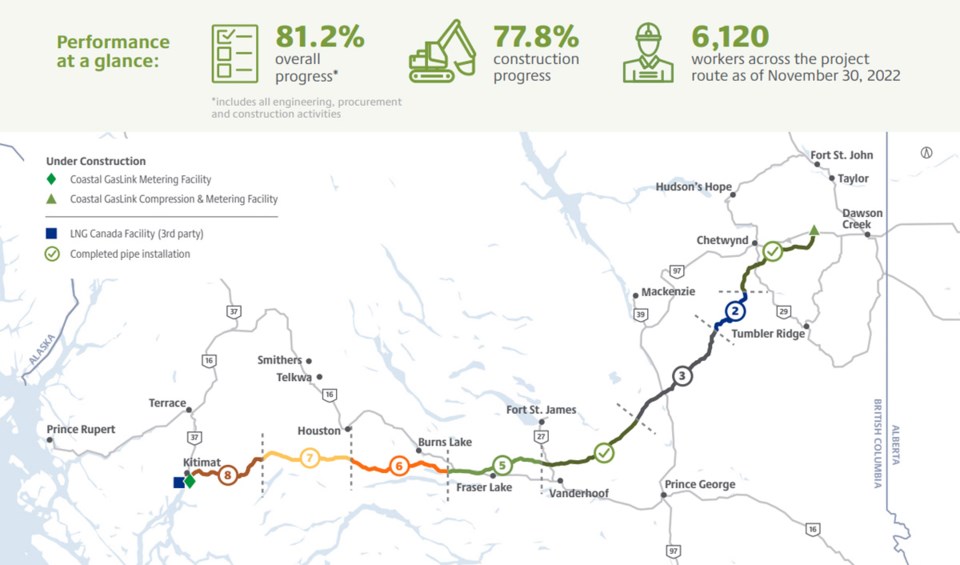By the end of 2022, work on the $11.2 billion Coastal GasLink natural gas pipeline across northern sa国际传媒 was 81.2 per cent complete, according to information released by pipeline owner TC Energy.
The construction portion of the overall project was 77.8 per cent as of the December update. As of Nov. 30, roughly 6,120 workers were employed along the 670-km pipeline route from the Wilde Lake Compressor Station, west of Dawson Creek, to LNG sa国际传媒’s liquified natural gas (LNG) export terminal under construction in Kitimat.
“To date, our team has installed nearly 490 km of pipe across the 670-kilometer route, and steady progress is made each day,” an update issued by TC Energy in late December said. “This year, we also safely and successfully completed 9 out of 10 major watercourse crossings.”
As of the December update, pipeline installation was complete in two of the project’s eight sections: Section 1 from west of Dawson Creek to South of Chetwynd, and Section 4 from north of Prince George to northwest of Vanderhoof.
On Section 3, from east of McLeod Lake to north of Prince George, 83.2 per cent of grading and 64.6 per cent of pipeline installation was complete. Roughly 1,164 workers were based at Parsnip Lodge, located northeast of Bear Lake.
Construction was least advanced in Section 7 of the project, where only 67.6 per cent of grading and 32.4 per cent of pipeline installation was complete, as of the December update. Section 7 is the 77 km stretch from south of Houston to north of Morice Lake, where and Wet'suwet'en First Nation hereditary chiefs and their supporters .
In November, TC Energy announced that cost pressures had driven the expected pricetag of the project to $11.2 billion, .
“This year has been full of many milestone achievements, and it’s all thanks to the support of the Indigenous and local communities along the project route,” the TC Energy update said. “We look forward to continuing to build this extraordinary legacy with you as we enter the final year of construction in 2023.”
Construction of phase 1 of was 70 per cent complete in late September, and was not expected to start shipping for another two or three years.



